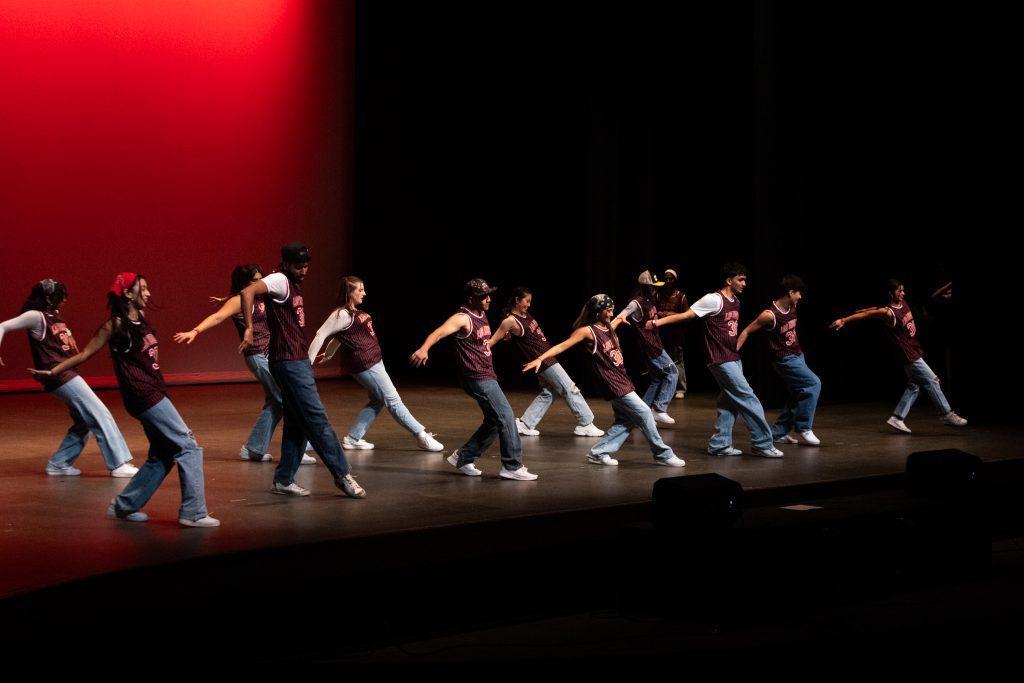The Indian International Student Union (IISU) held their annual Tamasha this past Saturday, Feb. 3, showcasing dances, clothing, music and traditions that are central to South Asian culture. With grand performances and a hilarious skit, the Anderson Center’s Osterhout Concert Theater was full of enthusiastic audience members coming together to watch IISU’s most anticipated event of the year.
Tamasha began with “Barbie World (with Aqua)” by Nicki Minaj blasting in the theater. Barbie, played by Shama Gandhi, fundraising chair of IISU and a junior majoring in integrative neuroscience, and Ken, played by Surya Baskaran, multimedia chair of IISU and a junior majoring in biochemistry, kicked off their televised exploration into the real world — otherwise known as Downtown Binghamton.
Zarina Roy, president of IISU and a senior majoring in business administration, explained how the Barbie theme came to fruition and how the theme was woven throughout this year’s Tamasha.
“Every year we choose some kind of relevant pop culture theme for the basis of Tamasha,” Roy wrote in an email. “Since ‘Barbie’ was one of the biggest movies of the summer, as an E-Board, we knew we had to go with it for our theme this year … Throughout the show, we have a skit following the Barbie plot line, played before each performance.”
While following the satirical storyline of Greta Gerwig’s 2023 blockbuster, IISU put their own spin on the “Barbie” movie. Barbie, a leading performer in Tamasha, is unable to carry out her dances, so she must take Ken to The Rathskeller in order to get her groove back. Along with IISU’s rendition of “Barbie,” several performances incorporated their own elements of the theme, such as Quimbamba’s use of the iconic phrase, “Hi Barbie,” “Hi Ken,” Bollywood Beat’s inclusion of “Dance the Night” by Dua Lipa and Black Dance Repertoire’s “Barbie” themed outfits and stilted, doll-like dances.
The “Barbie” theme was a unifying aspect of Tamasha, bringing together audience members and performers alike. What really makes Tamasha the ever-awaited event that it is, though, is its celebration of various South Asian cultures and traditions.
Zairah Ahmed, vice president of IISU and a senior majoring in philosophy, politics and law, offered the cultural significance of Tamasha as well as the event’s importance as a Binghamton production.
“Tamasha brings light to numerous aspects of the rich and authentic culture of South Asia, through song, dance, music and clothes,” Ahmed wrote in an email. “It is a showcase that gives Binghamton [University] students a chance to be in the spotlight to share and celebrate Indian arts, and for the audience to experience traditional, modern and fusion Indian performances right here on campus.”
Roy expanded on the impact of Tamasha and how it’s felt by those involved.
“We now have numerous performers and participants who are not South Asian, so clearly the goal of spreading South Asian culture has been achieved, and it is such a rewarding feeling to see so much cultural appreciation from other community members,” Roy wrote.
Tamasha, while a celebration of Indian culture, is also an opportunity to integrate the other cultural organizations that make up the greater Binghamton community. Whether this is demonstrated by the diverse cultural groups featured throughout the show or the myriad of students, professors and families in the audience, Tamasha brings people together within and across cultures.
Misha Patel, vice president of Binghamton Bhangra and a junior majoring in business administration, delves into the performances she was involved in and their embodiment of Indian culture.
“Bhangra is from Punjab, and it’s a super hype form of dance with very colorful outfits,” Patel wrote in an email. “Garbha originates from Gujarat and there it is also high energy but incorporates a lot of spinning and flowy moves … Bollywood Film is supposed to follow a Bollywood movie so it has a storyline and dramatic lines as well as several dance numbers. Lastly, South Indian incorporates several types of dance, the last one being my favorite, and it’s always a crowd pleaser.”
Ahmed further described how Indian culture is manifested throughout the production and shares what she hopes attendees take away from Tamasha.
“We highlight the beautiful diverse richness of India through dance, song and outfits, such as with Bhangra from Punjab, South Indian dance, Garba with Gujarati origins and more,” Ahmed wrote. “I hope everyone attending leaves the show with new knowledge and appreciation over our diverse student body and the different cultures that encompass it.”
Reflecting on the joint effort put into Tamasha, Roy extended her admiration to the cultures involved in the event and the impact of such camaraderie.
“Including other campus groups to perform is a great way to show the love and respect that the cultural communities of [BU] have for each other,” Roy wrote. “Working with such different organizations strengthens the unity of [BU] students, and I think it is great to see our shared bond and interests get stronger and stronger.”



